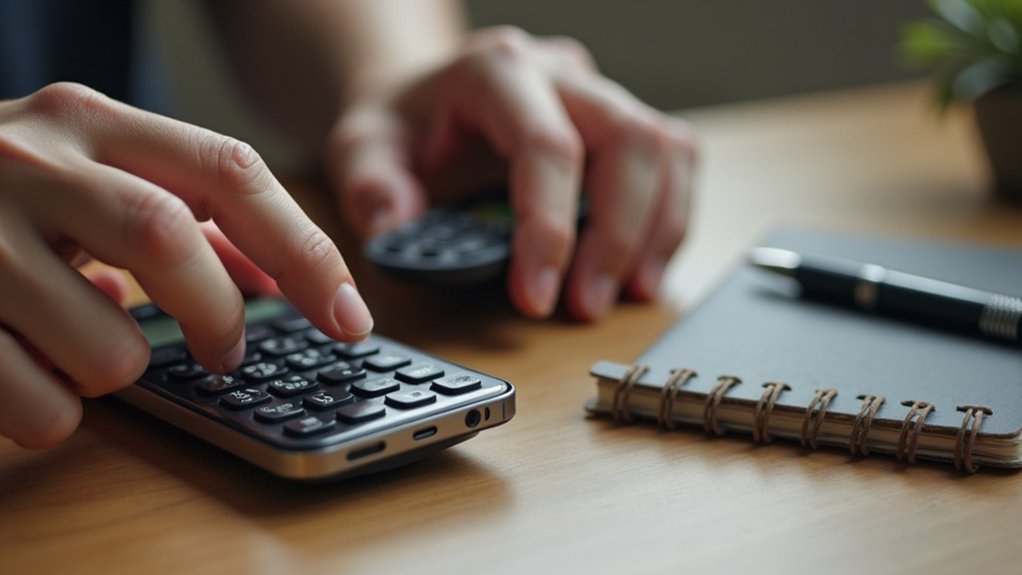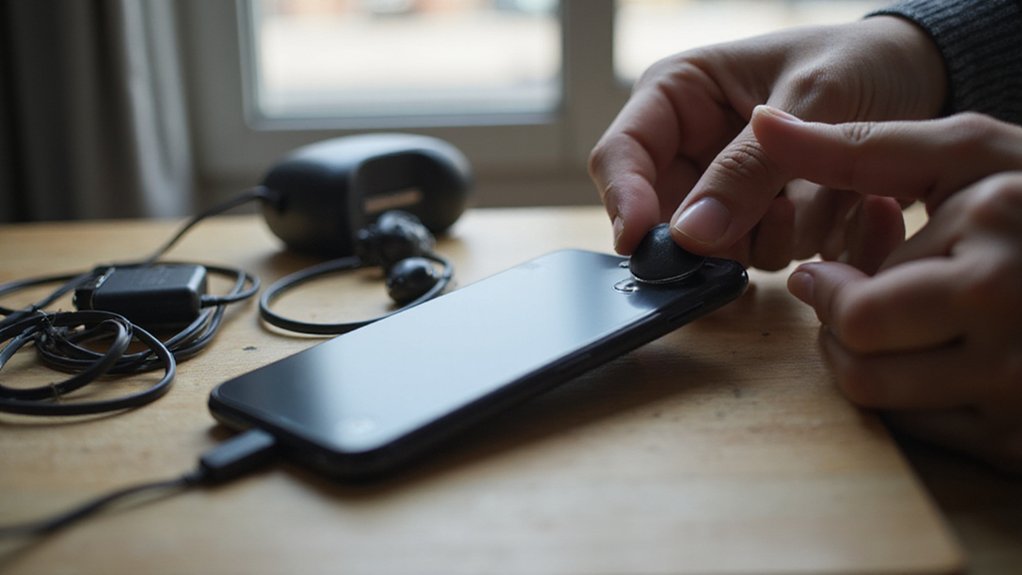In 2025, studies show that 68% of adults feel overwhelmed by constant smartphone notifications and digital noise. You’re not alone in craving a simpler digital existence. Shifting to a dumbphone isn’t just about ditching technology—it’s a strategic lifestyle redesign that promises more mental clarity and genuine human connection. If you’re tired of endless scrolling and digital burnout, this guide will walk you through a deliberate, mindful approach to reclaiming your attention and reshaping your relationship with technology.
Key Takeaways
- Conduct a comprehensive digital dependency audit by tracking smartphone usage, identifying trigger points, and measuring hours spent on non-essential applications.
- Research and select a suitable 4G LTE dumbphone that meets essential communication needs while minimizing digital distractions, targeting budget-friendly models between $20-$100.
- Develop a strategic communication plan that prioritizes voice calls and texts, setting clear expectations with professional and personal networks about reduced digital availability.
- Create intentional offline routines and habits that replace smartphone interactions, focusing on mindfulness, analog tools, and meaningful face-to-face connections.
- Establish ongoing support mechanisms, including accountability groups and regular self-reflection, to maintain commitment to a simplified technological lifestyle and manage potential challenges.
Assess Your Digital Dependency

How dependent are you on your smartphone? Understanding your digital dependency requires honest self-reflection about screen time and smartphone usage. Track your daily interactions meticulously, noting the frequency of non-essential app engagement and notification responses. You’ll likely discover revealing patterns about your digital consumption.
Begin by documenting how many times you reflexively reach for your device during work, leisure, or social moments. Calculate the hours spent scrolling mindlessly through apps that provide minimal value. Examine your emotional responses when separated from your smartphone – do you experience anxiety or restlessness? These indicators illuminate the depth of your technological attachment.
Choose the Right Dumbphone

Having mapped out your digital dependency, selecting the right dumbphone becomes your strategic next move. Your goal is finding a device that aligns with minimal communication needs while supporting essential functionality.
Strategically selecting a dumbphone minimizes digital noise while maintaining essential communication connectivity.
Consider these critical selection criteria:
- Network Compatibility: Prioritize 4G LTE dumb phone models that work with your current carrier, ensuring reliable connectivity beyond basic calling and texting.
- Feature Evaluation: Compare basic models like Nokia 110 4G or CAT S22, evaluating their essential apps and communication capabilities against your specific requirements.
- Budget Alignment: Explore options ranging from $20 to $100, balancing affordability with necessary smartphone replacement features.
When shifting, remember that your chosen dumbphone should simplify communication, reduce digital distractions, and support your intentional digital lifestyle without compromising core connectivity needs.
Plan Your Communication Strategy

After mapping out your digital detox journey, crafting a deliberate communication strategy becomes essential for successfully shifting to a dumbphone. Identify which communication methods are truly critical for your daily life, prioritizing voice calls and text messages. Leverage desktop versions of messaging apps to manage non-urgent communications, checking messages at specific times rather than being constantly connected.
Work with your IT department to set up SMS verification for important accounts, ensuring you can access necessary services. Proactively communicate your change to friends, family, and colleagues, setting clear expectations about response times and availability. Explore online forums for community support and practical strategies in managing communication with a dumbphone, transforming potential limitations into intentional connectivity.
Set Up Alternative Digital Tools

Strategic communication sets the groundwork for reimagining your digital ecosystem beyond a smartphone. When shifting to an old flip phone, you’ll need alternative digital tools to maintain connectivity and media access:
- Music & Entertainment: Leverage MP3 players for personal audio experiences, complementing limited phone calls with offline audiobooks from local libraries.
- Communication Channels: Utilize desktop computers for messaging apps, ensuring urgent communications remain possible without smartphone dependency.
- Navigation & Time Management: Invest in physical tools like printed maps and alarm clocks, reducing digital distractions while enhancing intentional interactions with your environment.
These alternative digital tools aren’t just replacements; they’re strategic choices that reclaim control over your technological consumption, creating a more purposeful and focused digital experience.
Manage Authentication and Services

How will you maintain digital access and security when shifting to a dumbphone? Authentication becomes strategic when you’re smartphone-free. Consider a physical security device like YubiKey for two-factor authentication, which provides robust verification without mobile dependency. Request SMS verification from IT departments, ensuring you can still access critical services. Some dumbphones offer limited browser functionality, allowing website authentication in a pinch.
A backup smartphone dedicated solely to authentication can be a practical solution, enabling you to receive verification codes while keeping your primary device distraction-free. Engage with online communities specializing in minimalist tech approaches to gather innovative strategies for managing services and access. Your change requires thoughtful planning, but with the right tools and mindset, you’ll successfully navigate digital authentication challenges.
Develop New Habits and Routines
Moving beyond digital authentication solutions, your journey to a dumbphone demands intentional habit restructuring. Breaking free from constant screen addiction requires strategic routine redesign:
- Offline Engagement: Cultivate mindfulness by dedicating daily time to non-digital activities like reading, walking, or journaling, replacing social media scrolling with purposeful interactions.
- Communication Discipline: Establish structured communication windows, using your dumbphone primarily for urgent matters while reserving non-critical exchanges for intentional moments.
- Physical Alternatives: Replace digital conveniences with analog tools – use paper planners, physical notebooks, and traditional alarm clocks to reduce technological dependency.
These deliberate choices transform your relationship with technology, encouraging deeper personal connections and reclaiming mental bandwidth from constant digital interruptions. By reimagining your routines, you’ll discover a more present, intentional lifestyle beyond constant connectivity.
Navigate Social and Professional Challenges
Might shifting to a dumbphone create unexpected friction in your social and professional networks? Open communication becomes your primary tool for steering through potential challenges. Proactively inform colleagues and friends about your communication preferences, setting clear expectations around response times and availability. Leverage desktop messaging apps to maintain professional connectivity, ensuring you don’t miss critical work communications. Strategically schedule check-ins to manage non-urgent interactions, reducing anxiety about missed messages while creating structured communication windows. Consider keeping a backup smartphone for specific professional networking scenarios where digital apps are essential. Adapt your social approach by encouraging face-to-face interactions and utilizing alternative information sources like printed materials. Your intentional communication strategy will help smooth the shift, demonstrating that a dumbphone doesn’t mean being disconnected—it means being more purposeful.
Embrace Analog Alternatives for Digital Functions
A compass points toward intentional living when you replace digital conveniences with analog alternatives. By embracing flip phones and older technologies, you’ll spend less time scrolling and more time experiencing life’s nuanced moments.
- Navigation: Replace smartphone maps with printed directions, strengthening spatial awareness and reducing digital dependency.
- Photography: Use disposable cameras to capture memories more thoughtfully, leaving us with tangible keepsakes instead of endless digital archives.
- Entertainment: Rediscover offline music through MP3 players or library audiobooks, creating space for deeper engagement.
These strategies help you live without constant digital interruption, transforming mundane activities into intentional experiences. Analog alternatives aren’t about rejecting technology, but about reclaiming your attention and creating meaningful connections with your surroundings.
Frequently Asked Questions
What Is the Best Dumb Phone in 2025?
You’ll find the Light Phone 3 stands out among best dumbphone brands, offering sleek design, improved battery life, and a user experience that balances minimalism with practical functionality—perfect for digital detox without total disconnection.
What Features Will Cell Phones Have in 2025?
Are you ready for a tech revolution? In 2025, you’ll see 5G-powered smartphones with AI, foldable screens, advanced cameras, and sustainable designs—addressing smartphone addiction while embracing the minimalism movement’s digital detox ethos.
Are People Switching Back to Dumb Phones?
Yes, people are embracing the dumbphone resurgence. You’re seeing a digital detox movement driven by the simplicity trend, as individuals prioritize mental health and seek to break free from smartphone addiction’s constant digital noise.
Why Is Gen Z Buying Dumb Phones?
Gen Z’s buying dumb phones for a digital detox, seeking mental health relief from social media’s constant noise. They’re drawn to the nostalgia factor and simplicity, craving genuine connections and moments of uninterrupted presence in an overstimulated world.
Conclusion
You’ve survived the dumbphone exodus—congrats, digital refugee! While your smartphone-addicted friends scroll endlessly, you’ll be rediscovering life’s analog pleasures. Sure, you might miss a few memes and group chats, but you’ll gain something priceless: actual human attention span and the radical ability to be present. Who knew disconnecting could feel so rebelliously liberating? Welcome to the intentional communication revolution—one flip phone at a time.

